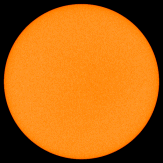
Posted on 02/17/2009 12:44:58 AM PST by Robert A Cook PE
Continuing a decade-long trend of declining global temperatures, the year 2008 was significantly colder than 2007, and global temperatures for the year were below the average over the past 30 years. The global temperature data, reported by NASA satellite-based temperature measurements, refuted predictions 2008 would be one of the warmest on record.
Data show 2008 ranked 14th coldest of the 30 years measured by NASA satellite instruments since they were first launched in 1979. It was the coldest year since 2000.
Satellite Precision
NASA satellites uniformly monitor the Earth?s lower atmosphere, which greenhouse gas theory predicts will show the first and most significant effects of human-caused global warming. The satellite-based measurements are uncorrupted by urban heat islands and localized land-use changes that often taint records from surface temperature stations, giving false indications of warming.
The uncorrupted satellite-based temperature measurements refute surface temperature station data finding 2008 to be one of the top 10 warmest years on record. “How can an ‘average year’ in one database appear to be a [top 10] warmest year in another?” asked meteorologist Joe D’Aleo on his International Climate and Environmental Change Assessment Project Web site.
“The global databases of [surface station reports] are all contaminated by urbanization, major station dropout, missing data, bad siting, instruments with known warm biases being introduced without adjustment, and black-box and man-made adjustments designed to maximize [reported] warming,” explained D’Aleo.
Warming Trend Overstated
“The substantial and continuing La Nina cooled the Earth quite a bit in 2008, to the point that it was slightly below the 30-year average [1979-2008] but slightly above the 20-year average [1979-1998],” said John Christy, distinguished professor of atmospheric science and director of the Earth System Science Center at the University of Alabama in Huntsville (UAH).
“From research we have published, and more to come soon, we find that land surface air temperatures misrepresent the actual temperature changes in the deep atmosphere - where the greenhouse effect is anticipated to have its easiest impact to measure. Surface thermometers are affected by many influences, especially surface development, so the bulk atmospheric measurements from satellites offer a straightforward indicator of how much heat is or is not accumulating in the air, for whatever reason,” Christy explained.
“Recent published evidence also supports the long-term trends of UAH as being fairly precise, so the observed rate of warming is noticeably less than that projected by the IPCC ‘Best Estimate’ model simulations which, we hypothesize, are too sensitive to CO2 increases,” Christy added.
This not meet the criteria for news in Obama’s ABBCNNBCBS new media.
The MSM will give it the coverage it feels it deserves. And Obama and Congress, well... there's too much money at stake to let this one go.
Rather:
And Obama and Congress, well... there's too much power and economic control at stake to let this one go.

The sun is blank--no sunspots.



Good stuff. Keep it up!
THANKS, BFL
Nice post. Thanks.
Disclaimer: Opinions posted on Free Republic are those of the individual posters and do not necessarily represent the opinion of Free Republic or its management. All materials posted herein are protected by copyright law and the exemption for fair use of copyrighted works.